At just 23 years of age when he started racing in 1967, Larry Coltom introduced himself to the snowmobile racing world by winning the Kawartha Cup in 1968. Coltom spent the next 12 years as one of Arctic Cat’s top riders, finding most of his success on the ice ovals and earning the nickname “Mr. 340” for his outstanding success in that class.
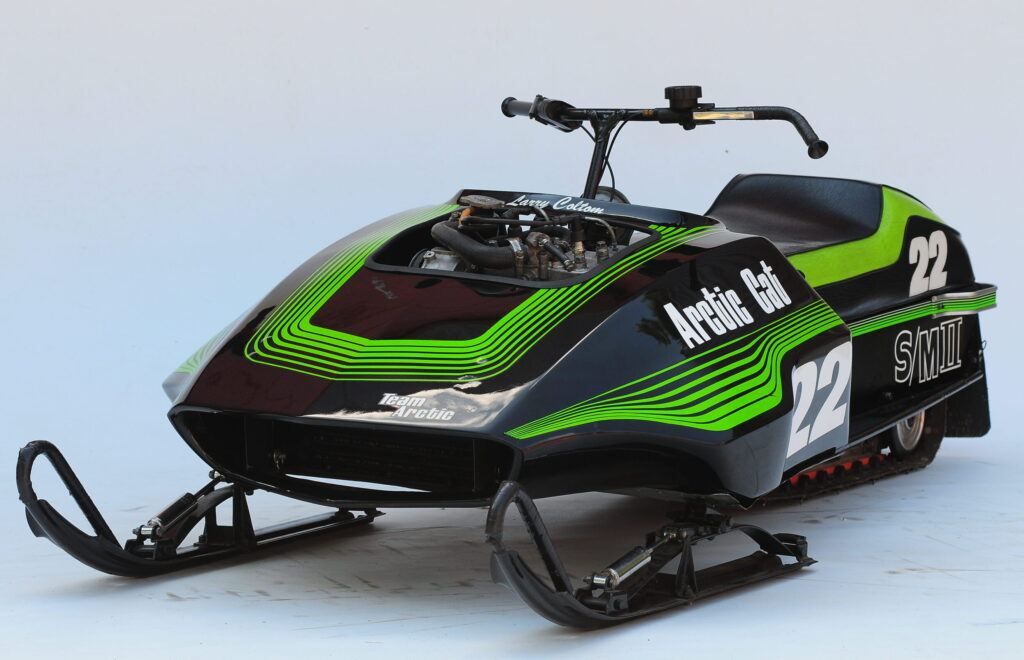
By the fall of 1975, snowmobile racing was still new, but it had grown by leaps and bounds since its first real set of rules had been accepted just a decade earlier. Coltom had jumped in on the ground floor and by then was a grizzled, decorated veteran. Even younger was the SnoPro series, the industry’s first attempt to separate professional racers from amateurs, was set to enter its third year and the stakes were growing as fast as the racing. Polaris had quickly become the team to beat, having gotten a head start on the other big fish, Ski-Doo, when, at the last minute, Ski-Doo pulled out of SnoPro due to the OPEC oil embargo and untimely poor winters (after sparing no expense collecting a vast array of exotic parts including magnesium engines). No one knew if there would be gas for their cars, no less snowmobiles or other recreational equipment. But racing went on and, as a result, Ski-Doo’s program suffered a huge setback, leaving the door open for Arctic to gain ground as well as an upstart Mercury team.
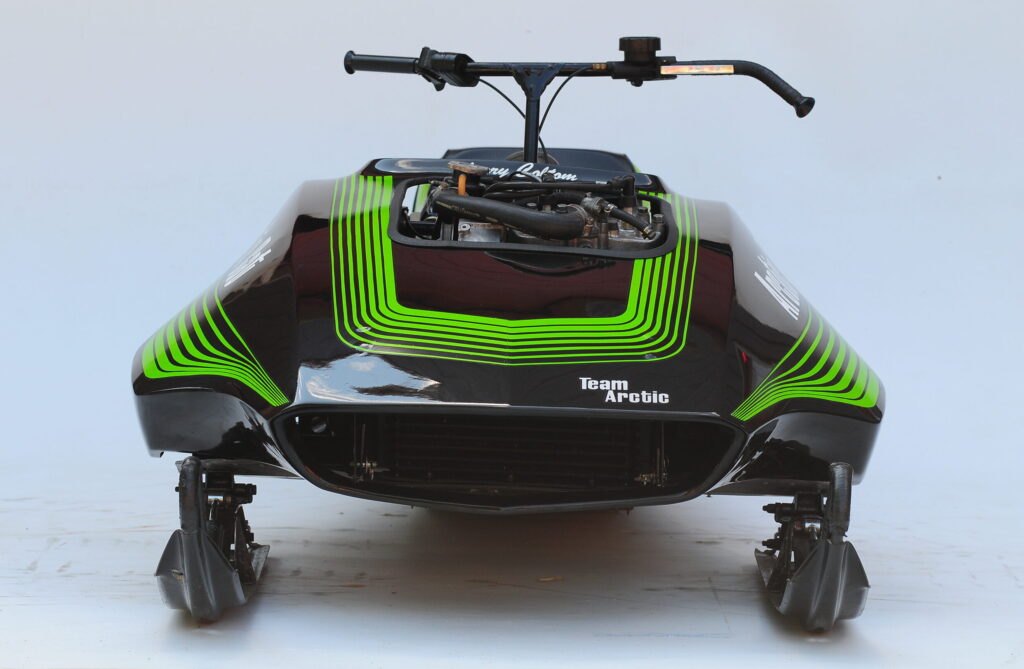
Mercury had the resources to become a formidable player in the snowmobile market but, despite the size of the company and their racing budget, they could hardly be considered a manufacturer on the same level as Polaris, Ski-Doo or Arctic Cat. In fact, in 1976 Mercury built about 6,600 snowmobiles – 1,650 of them (a quarter of total production) for racing use. Mercury left the industry after 1976, and one Mercury employee was quoted saying, “The reason we’re getting out of the snowmobile business is because we never got into it.” It wasn’t only Mercury going up against the big boys in SnoPro; Scorpion, Skiroule, Kalamazoo Engineering, Aaen Engineering, and Arbe Products/Manta were prepping races sleds for the series as well. Yamaha had not committed fully, but would show up in varied forms. Long story short, in 1975-76 Coltom and Team Arctic, despite their talent, knowledge and resources, had a huge task ahead of them if they wanted to win in SnoPro.
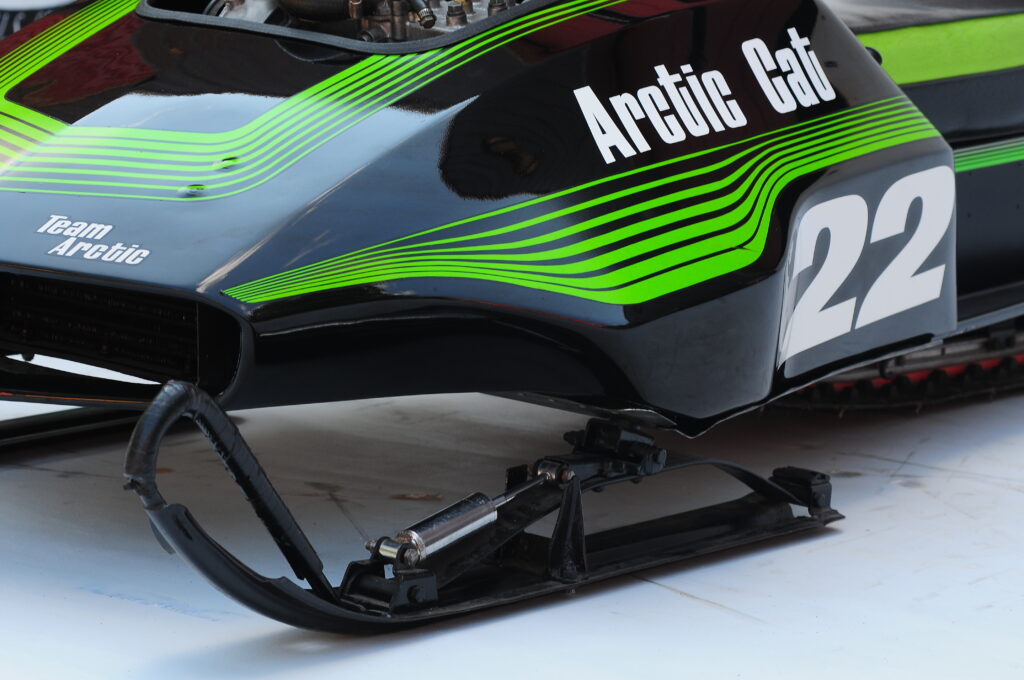
The traditional shakedown event took place November 1, 1975, at Brandt’s Lodge in Alaska. Snowmobile innovation was still very much like the Wild West at the time, so no one really knew what the other manufacturers would show up with. It was an informal race, more of a test really, but Coltom backed by fellow Arctic rider Kent Espeseth had won using their new sleds powered by new Suzuki engines. However, they were not sure they had leapfrogged the competition – especially the short, fast, Mercurys and hugely-powerful Yamaha 440s – at least not yet.
Then came International Falls, Minnesota, Newburg, Wisconsin, and Jackman, Maine. Mercury and Yamaha cleaned up. Although Coltom did claim a victory in the 340 class on the sled featured here at International Falls.; Arctic realized their Z race sleds were too heavy and lacked horsepower compared to the competition.
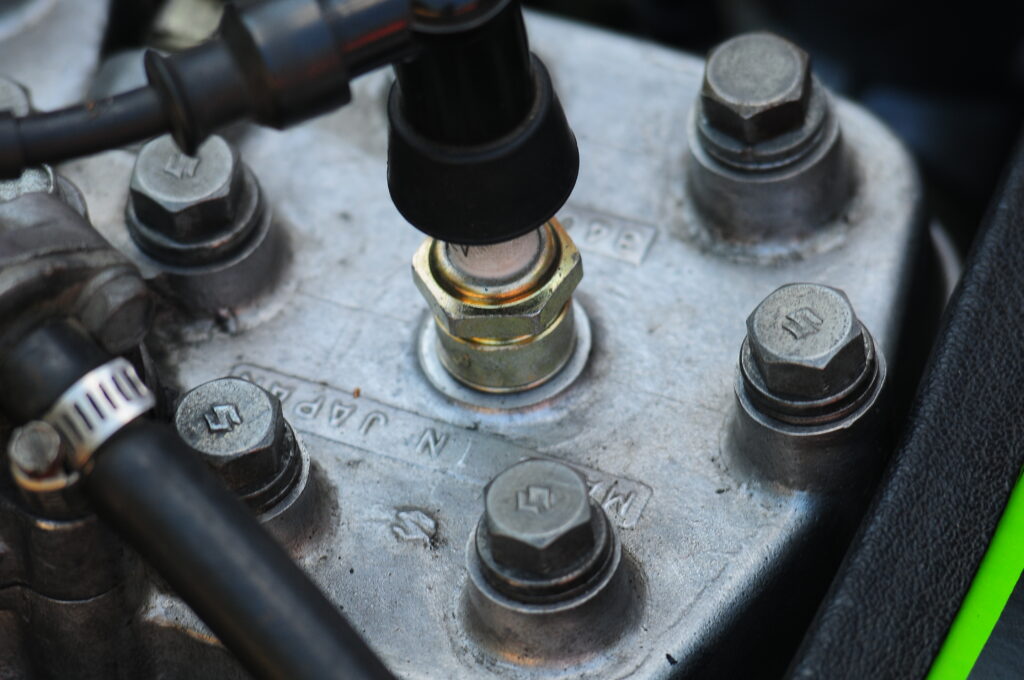
But by the end of the month, Team Arctic was back on top and Coltom walked away from the Dayco Holiday Spectacular in Alexandria, Minnesota, with the $4,000 top prize – the largest payout snowmobile racing had ever seen up to that point. Coltom then won Super Mod 250 at Eagle River in January and took first place in Super Mod 340 (again on this sled) at the Carling Race of Champions in Weedsport, New York.
The 1975-76 season was a hard-fought one for Team Arctic, but Larry Coltom emerged the high-point rider in SnoPro. However, the landscape was set to change in a big way. While Coltom and the rest of the SnoPro field were racing leaf-sprung machines, Gilles Villeneuve had ridden an IFS Skiroule all season with varied success. But when Villeneuve won on a rough track at the Kilkenny Cup in Lancaster, New Hampshire, and then when his brother Jacques ran away with Super Mod 250 at the Paul Bunyan International Open in Bangor, Maine, it was clear IFS was the future – at least to some. After all, Super Mod 250 was “Arctic’s class,” one in which they were rarely beat. Arctic, however, was still not convinced.
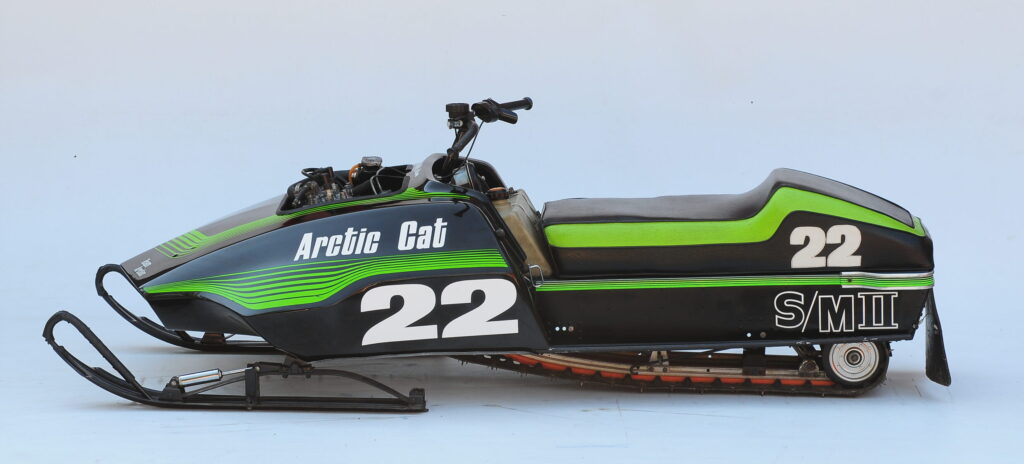
The next year Polaris debuted their line of IFS SnoPro machines. Arctic, unsure of the concept, stuck with leaf springs. At Brandt’s Lodge in December of 1976 Polaris won 11 of 12 Super Mod races and set the tone for the season. Polaris had leapfrogged everyone, including Arctic who would spend the next year playing catchup. As Arctic’s Dennis Zulawski said at the time, “Polaris made such a drastic gain that everyone is uncompetitive. I mean everyone.” But Zulawski’s larger point was, while Arctic, Yamaha and Ski-Doo could recover, what about the smaller manufacturers and independent racers? Polaris’ success with IFS eventually weeded all the small fish from competition. One thing was sure, Arctic would not win another SnoPro points title until Elsner won in 1978 and leaf spring snowmobiles had seen their day come and go on the ice ovals.
There were only six Super Mod II 340Z racers built by Arctic Cat in 1976. This one was ridden by Coltom on his way to the SnoPro high points championship in 1976 – the last year a leaf-sprung sled would achieve such a feat. Mike Smith of Wasilla, Alaska, purchased the sled and raced it until 1990 when it was retired from competition. At this writing the sled was still owned by Smith and Adam Hagen. Special thanks to the Snowmobile Hall of Fame in Saint Germain, Wisconsin for allowing to photograph this snowmobile.
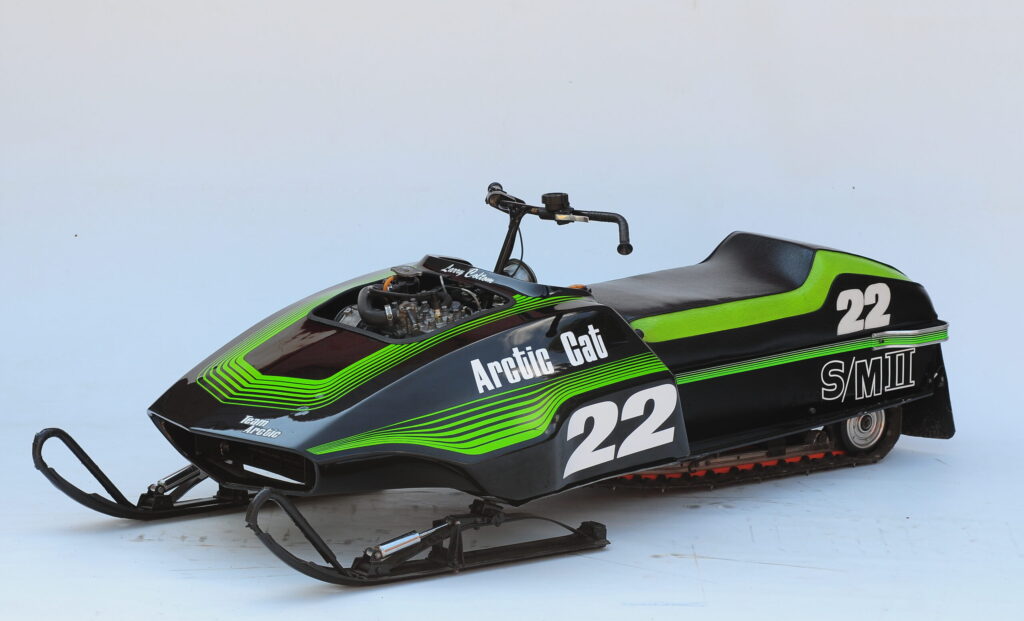



IMO the 76 Sno Pro is the best looking Cat ever built.
Agreed.
They need to hire the design team from the mid 70’s and 90’s back ! The new sleds suck ! My Catalyst Riot is at a vinyl shop now. Getting the tunnel wrapped. Looks pretty sad the way it came from the Factory.
I already like the direction this site is going. Nice article!
Wow, this is some cool info. and brings back memories of that time. Thanks Pat, the future looks like it’s going to be a lot of fun.
Awesome read!
Off to a great start Pat!
Thank you 👍
This Pat guy seems to be a great writer.
Great read.
Never get tired of hearing anything 70’s sno pro related.
Such a great time in snowmobile history.
There is just something about those pinstripes on a 76 Sno Pro that make a guy swole. Great story!
Great article, although I thought that the only original sled left was Larry’s 440 that had been loaned out to the advertising dept. for photos when the others were destroyed. So are there still 2 of Larry’s sleds still in existence?
Maybe that’s only the 440’s?
Always loved those stripes. Time for another retro paint scheme
Oh my God. The posters in my locker over this sled. Simply brutally elegant.
Not only is the 76 Sno Pro the Best looking Cat ever but in my opinion the Best looking sled ever. I was at the race in Alexandria in December of 75 When Larry Coltom won the Hetteen Cup and my friends and I spent much of the time in the Cat pits starring at these beautiful new race sleds that seemed to win just about everything that weekend!! Love the History stories Pat and looking forward to many more in the future.
Remake it. New 600, and a double secret limited build.
The 05 Retro Firecat was a cool looking sled. I picked the Black Widow instead. Still have it. Absolutely dig it.
Amen to Retro Randy’s request above. I will be 2nd in like (after Randy) to order one just to look at in my garage.
Look at? RIDE IT!!!
Trivia: First generation Puma muscle sled of 1970 and the second generation 1971 model inspired both the 1974 Sno Twister and the first year (1971) Sno Jet Thunderjet. ( It’s in the history books. I swear I didn’t invent these facts in my basement. ) Arctic has a long history of inspiring the competition.